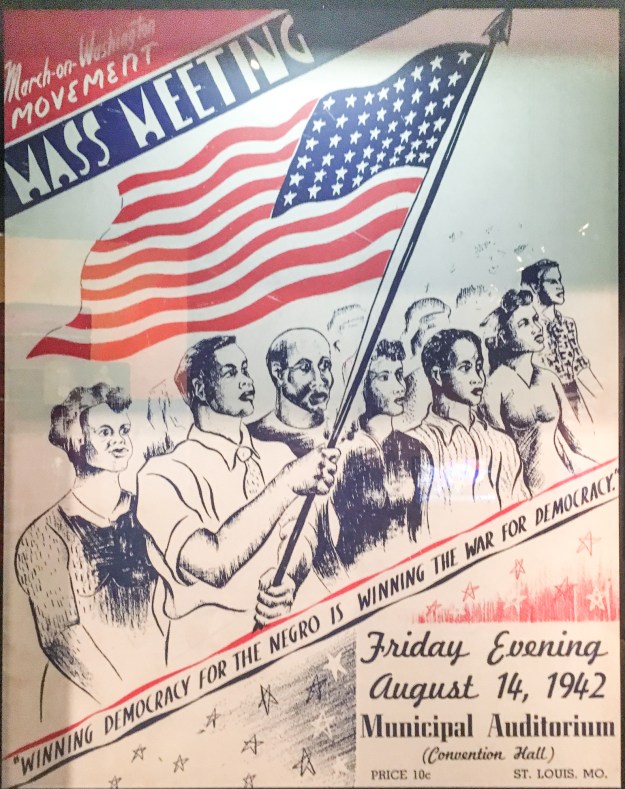The Missouri History Museum in St. Louis has a new exhibit: #1 in Civil Rights: The African American Freedom Struggle in St. Louis. I grew up in St. Louis and the title sounded ridiculous. #1? Every school in the state of Missouri requires students to learn about Missouri history in 4th grade. We learned about Daniel Boone and the Pony Express and the Dred Scott case. We didn’t learn about protests or sit-ins or bus boycotts. My school district was desegregated with busing in 1983. The events in Ferguson in 2014 don’t exactly suggest a racially-progressive St. Louis.
So how could the History Museum argue that St. Louis was #1 in civil rights?
It’s a quote. For the 1964 bicentennial of St. Louis, Nathan B. Young wrote an article calling St. Louis the #1 city in civil rights. He was the editor of the St. Louis American, a black newspaper. He argued that the civil rights Supreme Court cases that originated from the city and the civil rights actions in the city made St. Louis a prominent city in the movement. The argument is summarized in the 8 minute video from the History Museum below.
The history of civil rights in St. Louis
The exhibit covers all kinds of history I never learned. Missouri was a slave state. But there were protests seeking its admission as a free state in 1819.
St. Louis spawned four major Supreme Court cases.
- 1857 Dred Scott v. Sandford, in which Chief Justice Court Roger Taney declared that blacks had “no rights which the white man was bound to respect.” Not exactly a win for decency, but incredibly significant.
- 1938 Gaines v. Canada, in which state universities were required to admit black students if the state lacked a program at a black university. Lloyd Gaines sued for admittance to the University of Missouri Law School. In response, a law school was added to Lincoln University, a black college. Lloyd Gaines went missing in 1939 and has never been found. The Black Culture Center at the University of Missouri is named for Gaines. I am an alum of the University of Missouri and I learned about him for the first time in this exhibit. Other states went so far as sending their students out of state to comply with Gaines v. Canada.
- 1948 Shelley v. Kraemer, which said that courts couldn’t enforce racial covenants.
- 1968 Jones v. Alfred H. Mayer Co., which said that sellers aren’t allowed to have discriminatory racial covenants either. In this case, the seller secretly helped the mixed-race couple buying the home, funding their lawsuit.
St. Louis also had sit-ins starting in the 40s, was active in the 1940s March on Washington movement, and had very active NAACP and CORE chapters.

I feel cheated that we learned so little of this rich history in school. Fortunately, that deficit is being recognized today.
If you have a chance to visit the exhibit, I highly recommend it. There are several actors playing period activists (ACTivists, get it?), and the woman who played Margaret Bush Wilson was amazing. Stylized portraits of the subjects were commissioned for the exhibit, which was really cool, and necessary in the case of some of the 19th century people with limited period imagery.
The exhibit is really upbeat and focuses on the fight for equality in St. Louis. The negative parts of history–the white flight and the reactionary racism–that’s not a part of this exhibit. It’s part of the story too, but they chose to portray a history that the city can rally around. So little of this history was in my curriculum; I hope that this exhibit and the work supporting it improves that deficit.

